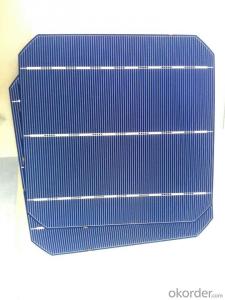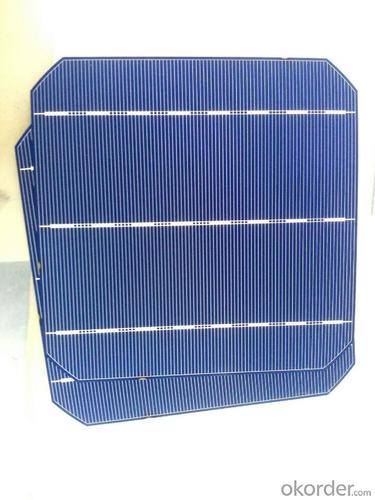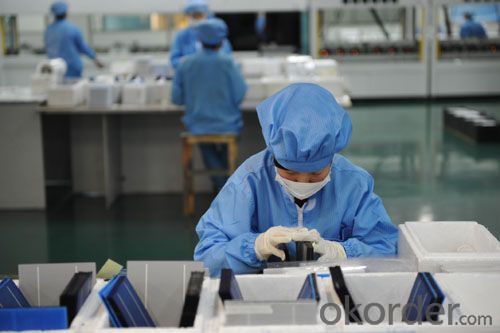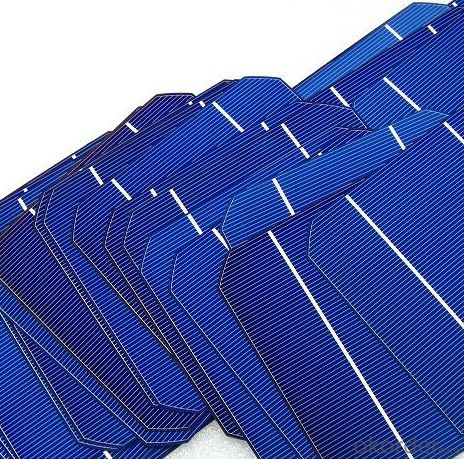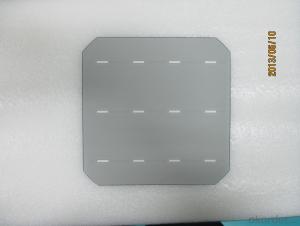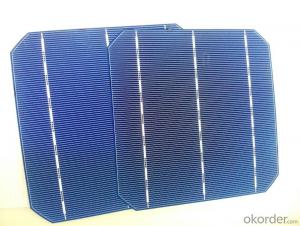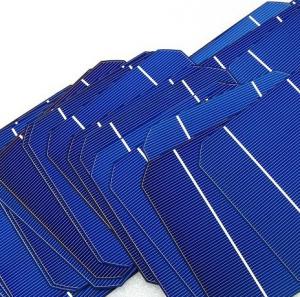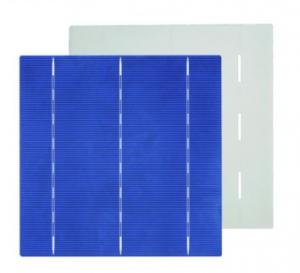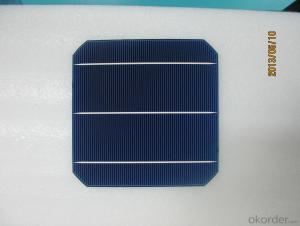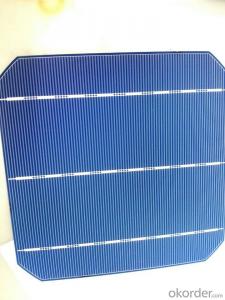High Efficiency Solar Cells Price - Monocrystal Solar Energy Cell 156x156mm 18.1% Efficiency
- Loading Port:
- China Main Port
- Payment Terms:
- TT or LC
- Min Order Qty:
- -
- Supply Capability:
- 1000000 PCS/month
OKorder Service Pledge
OKorder Financial Service
You Might Also Like
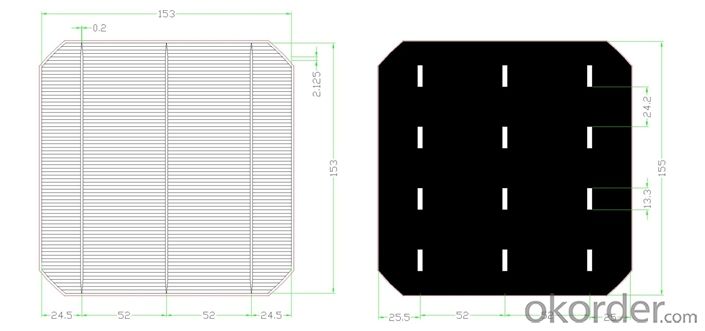
Monocrystal Solar Energy Cell
type:156M
appearance:156×1565㎜±0.5mm;diagonal:R=100mm
Main fence wide:1.4-1.5mm back electrode wide:2-2.5mm
Fence line qty:90
Cell thickness:220um±20um
18.10- 18.20 |
4.33 |
8.73 |
8.21 |
0.631 |
0.528 |
78.7 |

remark:our company cells as per working current concentrate principle,separate the first and the second grade
Factory Picture of Solar Cells
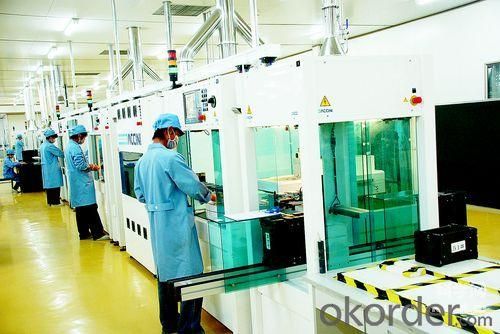
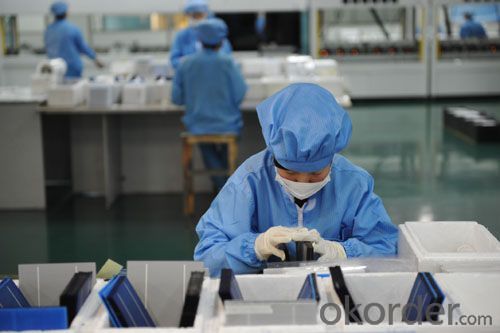
FAQ
We have organized several common questions for our clients,may help you sincerely:
What’s price per watt?
A: It’s depends on the quantity, delivery date and payment terms of the order. We can talk further about the detail price issue. Our products is high quality with lower price level.
Can you tell me the parameter of your solar cells?
We have different series of cells with different power output, both from c-si to a-si. Please take our specification sheet for your reference.
How do you pack your products?
We have rich experience on how to pack the panels to make sure the safety on shipment when it arrives at the destination.
Can you do OEM for us?
Yes, we can.
How long can we receive the product after purchase?
In the purchase of product within three working days, We will arrange the factory delivery as soon as possible. The perfect time of receiving is related to the state and position of customers. Commonly 7 to 10 working days can be served.
- Q: How long does it take for solar cells to pay for themselves?
- The payback period for solar cells typically ranges from 5 to 10 years, depending on various factors such as the initial cost, energy consumption, and local solar incentives.
- Q: What is the role of combiners in solar cell systems?
- The role of combiners in solar cell systems is to combine the electrical outputs from multiple solar panels into a single output, increasing the overall power output of the system.
- Q: Can solar cells be used to power electric fences?
- Yes, solar cells can be used to power electric fences. Solar panels can convert sunlight into electricity and store it in batteries, which can then be used to power the electric fence. This allows for a sustainable and reliable power source for electric fences, especially in remote locations where connecting to the grid may not be feasible.
- Q: Can solar cells be used in satellite or space exploration missions?
- Yes, solar cells can be used in satellite or space exploration missions. In fact, they are extensively utilized in these missions to provide power to spacecraft and satellites due to their ability to convert sunlight into electricity efficiently.
- Q: How do solar cells perform in areas with high levels of industrial emissions?
- Solar cells can perform less efficiently in areas with high levels of industrial emissions due to the presence of air pollutants. These emissions can create a layer of grime on the surface of solar panels, reducing their ability to absorb sunlight. Additionally, air pollution can scatter and block sunlight, further reducing the overall performance of solar cells in such areas. Regular cleaning and maintenance of solar panels may help mitigate the impact of industrial emissions on their performance.
- Q: Can solar cells be used for powering hospitals?
- Yes, solar cells can be used to power hospitals. Solar energy can be harnessed through solar panels or solar cells, and these can generate electricity to meet the power needs of hospitals. By utilizing solar power, hospitals can reduce their reliance on traditional energy sources, lower their operating costs, and contribute to a cleaner and more sustainable environment. However, the feasibility of using solar cells for powering hospitals depends on factors such as the hospital's energy demand, available space for solar panels, and the region's sunlight availability.
- Q: Can solar cells be used for refrigeration?
- Yes, solar cells can be used for refrigeration. Solar-powered refrigeration systems utilize solar cells to convert sunlight into electricity, which is then used to power the refrigeration process. This technology is particularly useful in off-grid or remote areas where access to electricity is limited. It allows for sustainable and environmentally-friendly refrigeration solutions.
- Q: What are the safety considerations for installing solar cells?
- Some safety considerations for installing solar cells include proper handling of the panels to avoid damage or injury, ensuring that electrical connections are correctly installed to prevent electrical hazards, and complying with local building codes and regulations. Additionally, it is essential to work with a qualified installer or electrician who is trained in solar installations to minimize any potential risks.
- Q: Can solar cells be used in power plants?
- Yes, solar cells can be used in power plants. Solar power plants, also known as solar farms or solar parks, utilize large arrays of solar panels that contain solar cells to convert sunlight into electricity. These power plants can generate a significant amount of renewable energy and contribute to reducing greenhouse gas emissions.
- Q: Can solar cells be used in cold climates?
- Yes, solar cells can be used in cold climates. Although solar cells are more efficient in warmer temperatures, they can still generate electricity even in cold climates. Additionally, advancements in solar technology have made it possible for solar cells to work efficiently in low-light and snowy conditions.
Send your message to us
High Efficiency Solar Cells Price - Monocrystal Solar Energy Cell 156x156mm 18.1% Efficiency
- Loading Port:
- China Main Port
- Payment Terms:
- TT or LC
- Min Order Qty:
- -
- Supply Capability:
- 1000000 PCS/month
OKorder Service Pledge
OKorder Financial Service
Similar products
Hot products
Hot Searches
Related keywords
